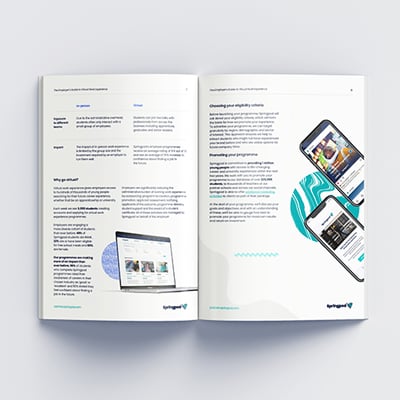
Work experience is essential for all young people - it allows them to gain access to the world of work, giving them an insight into the future career path they may one day take.
In the past it has often been associated with two weeks of filing and making cups of tea in a stuffy office, adding very little value to the student involved - other than, perhaps, a feeling of gratitude about returning back to school.
Work experience doesn’t need to be this way and organisations now have the opportunity, more than ever, to inspire the next generation in preparing for the world of work.
So, how can you achieve this?
Introducing Work Experience 2.0. The new way for employers to deliver work experience that is accessible, inclusive & scalable for young people across the UK.
In-person vs. virtual - what’s the difference?
| In-person | Virtual | |
| Safety | Many work environments are not suitable for work experience opportunities due to age or legal and safety restrictions. | All activity takes place online, so students can experience careers and environments that may not be suitable in person. |
| Group size | Often small groups of students at one time for around 1-2 weeks and within the working hours of the organisation. | Cohorts often include several thousand students. Most organisations are able to reach ten times the number of students they could with in-person work experience. |
| Administrative overhead | Employers need to coordinate with schools, students and parents. They need to consider safeguarding, health and safety as well as supporting the students on-site. | Virtual programmes can be built and delivered by a third party such as Springpod. |
| Accessibility | Students need to be able to travel to the work experience location and they need to be available for the full duration of the programme. | Programmes can be opened to any UK student. Students can fit the programme around their schedule by catching up with on-demand elements. |
| Exposure to different teams | Due to the administrative overhead, students often only interact with a small group of employees. | Students can join live talks with professionals from across the business including apprentices, graduates and senior leaders. |
| Impact | The impact of in-person work experience is limited by the group size and the investment required by an employer to run them well. | Springpod’s employer programmes receive an average rating of 8.9 out of 10 and see an average of 35% increase in confidence about finding a job in the future. |
Now that you are aware of the differences, why not explore options about how you can plan, implement and deliver your very own bespoke virtual work experience programme.

Download our free Employer’s Guide to Virtual Work Experience to find out more.
Continue reading

A Letter from our CEO, Sam Hyams



